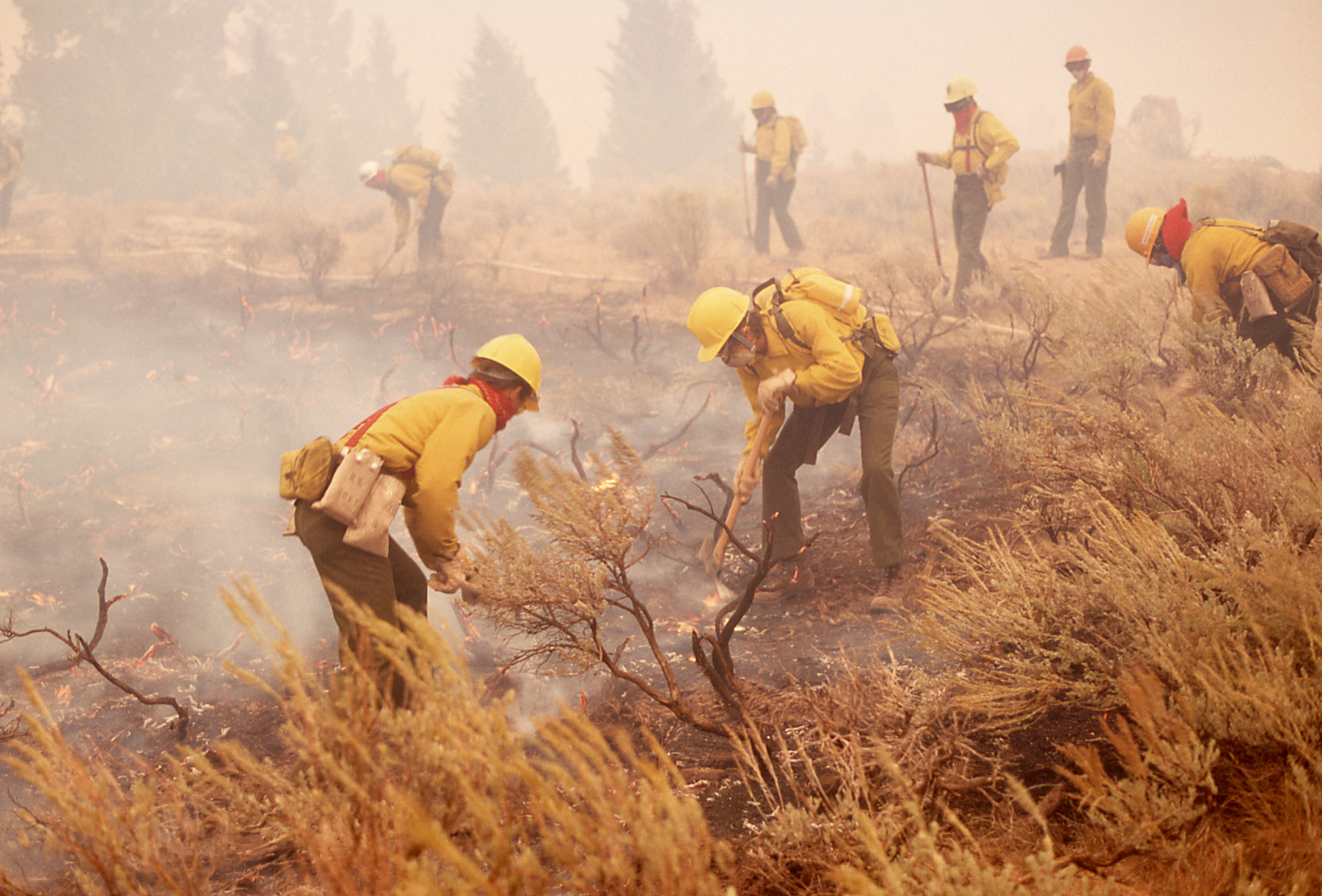The 1988 wildfire season was an event that changed the course of how Yellowstone National Park managed naturally occurring wildfires. The policy up until 1988 was to allow naturally caused fires to burn themselves out or in many cases the National Park Service instituted controlled burn plans, while man caused fires were always suppressed. Naturally caused fires begin with lightning strikes and are a normal part of the forest’s ecology. Certain species of trees and wildflowers are unable to germinate without extreme heat temperatures among other reasons, which is why the National Park Service had these wildfire policies for many years. However, in the 1988 season it was unusually dry with little or no rain in the month of July. Thus, several small fires which began both in and outside of the park boundaries turned into larger fire complexes, resulting in the burning of over one-third of the parks forests. The decision was made by the Department of the Interior to change its policy concerning all wildfires in that naturally occurring wildfires would be suppressed, if they reached a certain size and if they began to endanger people
and/or historic sites and structures within the park. Over 9,000 people were brought in to battle the wildfires during that year, with over 4,000 U.S. military personnel contributing to the firefighting efforts. There were over 25,000 people who contributed to the overall efforts to suppress the wildfires. Surprisingly very few mammals were killed, about 300 animals in total including 246 elk, 9 bison, 4 mule deer, and 2 moose. The total cost of the 1988 fire season was about $120 million and suppression efforts did not end until September when rain and snowfall put out most of the remaining fires.

Unfortunately, the media played a negative role in the public perception of the 1988 wildfire season. By making statements about the area of the wildfires and not keeping the sizes of each wildfire accurate the public thought that the entirety of the park was burning and that the National Park Service was doing absolutely nothing to contain the fires. This has been demonstrated to be a falsehood perpetuated by the media; it is now known that the National Park Service instituted a controlled burn policy on all wildfires while simultaneously allowing them to burn in a natural way for they understood the natural ecology of the forest was to have wildfires.
At the time the 1988 fire season in Yellowstone was the largest firefighting incident in United States history, but that does not mean that there were a lot of negative consequences for the ecology and wildlife in the park. Many researchers and scientists were able to observe the natural consequences of the wildfire devastation; some of the results were new tree growth of lodge pole pines as well as aspens in areas that  had previously seen no growth of that kind, as well as shifts in streams from debris. More importantly a growing knowledge in the public about the positive effects and the need for wildfires rather than just knowledge on the devastation it can cause to a forest’s ecology. One of the negative consequences was a drop in moose population due to the loss of old growth in the park. Despite this the National Park Service had a unique opportunity to create educational programs surrounding the 1988 fire season with museum exhibits, hikes, and sign postage.
had previously seen no growth of that kind, as well as shifts in streams from debris. More importantly a growing knowledge in the public about the positive effects and the need for wildfires rather than just knowledge on the devastation it can cause to a forest’s ecology. One of the negative consequences was a drop in moose population due to the loss of old growth in the park. Despite this the National Park Service had a unique opportunity to create educational programs surrounding the 1988 fire season with museum exhibits, hikes, and sign postage.

For more information concerning the 1988 Wildfire season in Yellowstone National Park see: https://www.nps.gov/yell/learn/nature/1988fires.htm or visit the Yellowstone Heritage and Research Center in Gardiner, Montana for various publications and archival materials on the lasting effects of the 1988 Wildfire season.
Pictures taken from the Yellowstone Slide File
